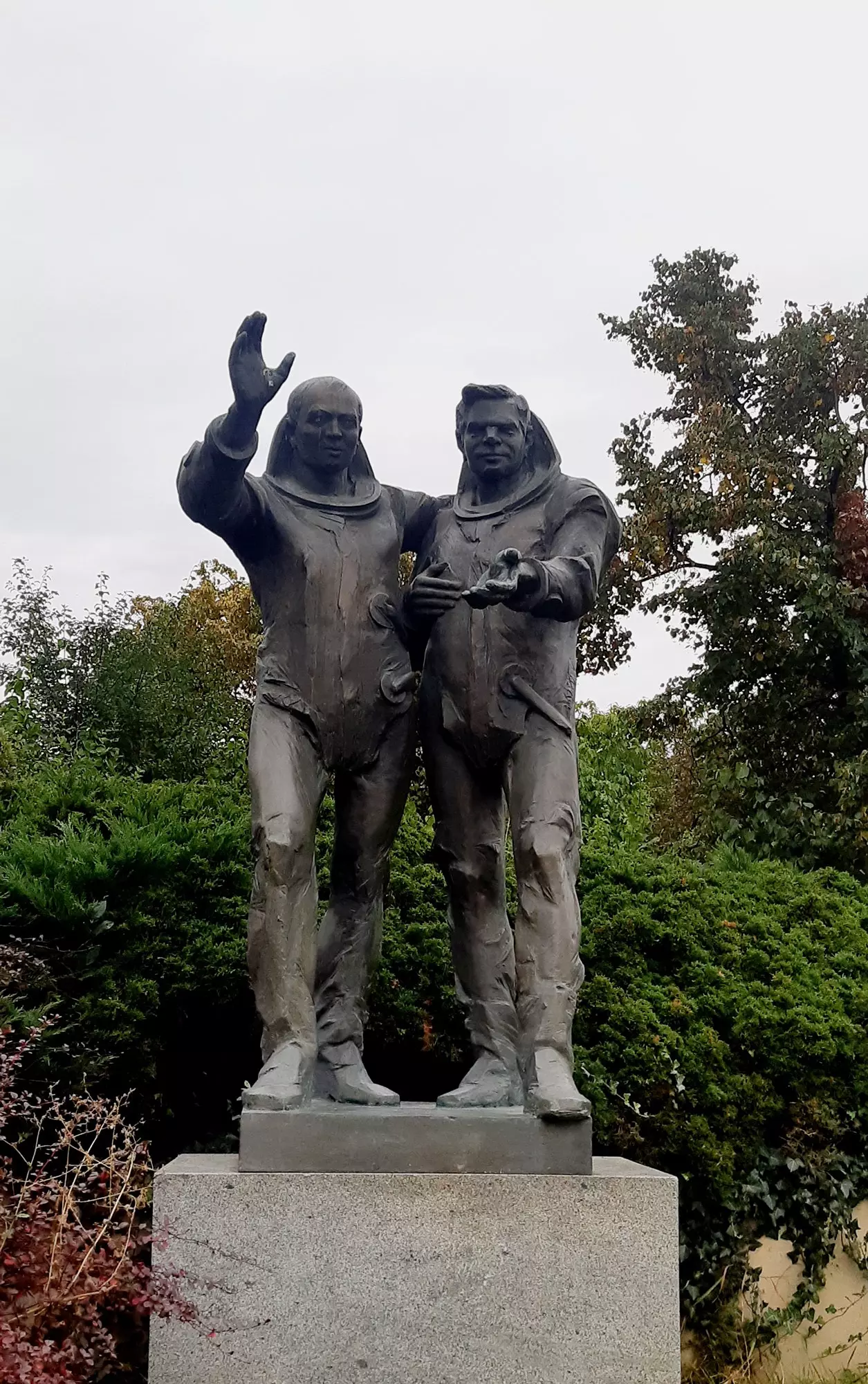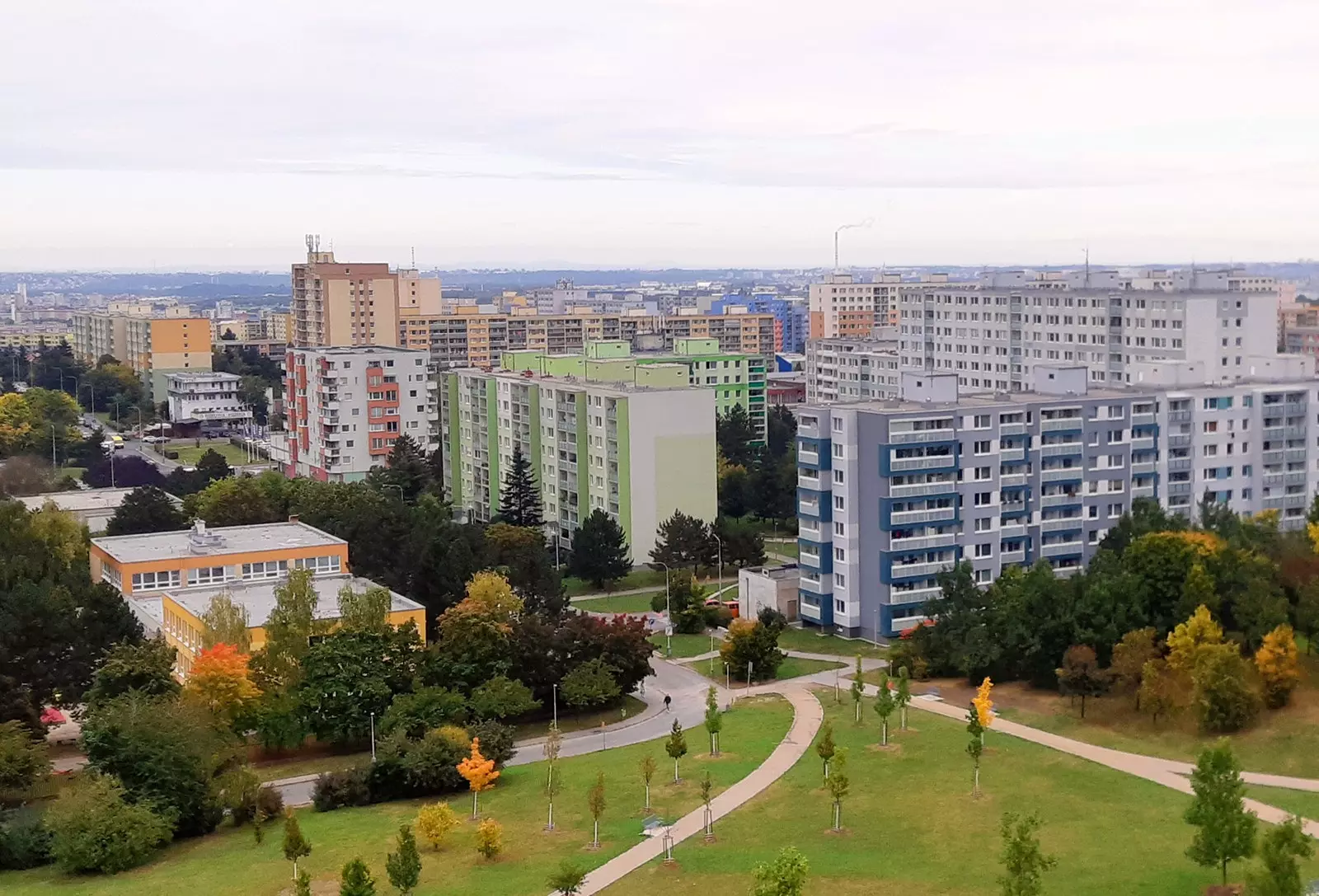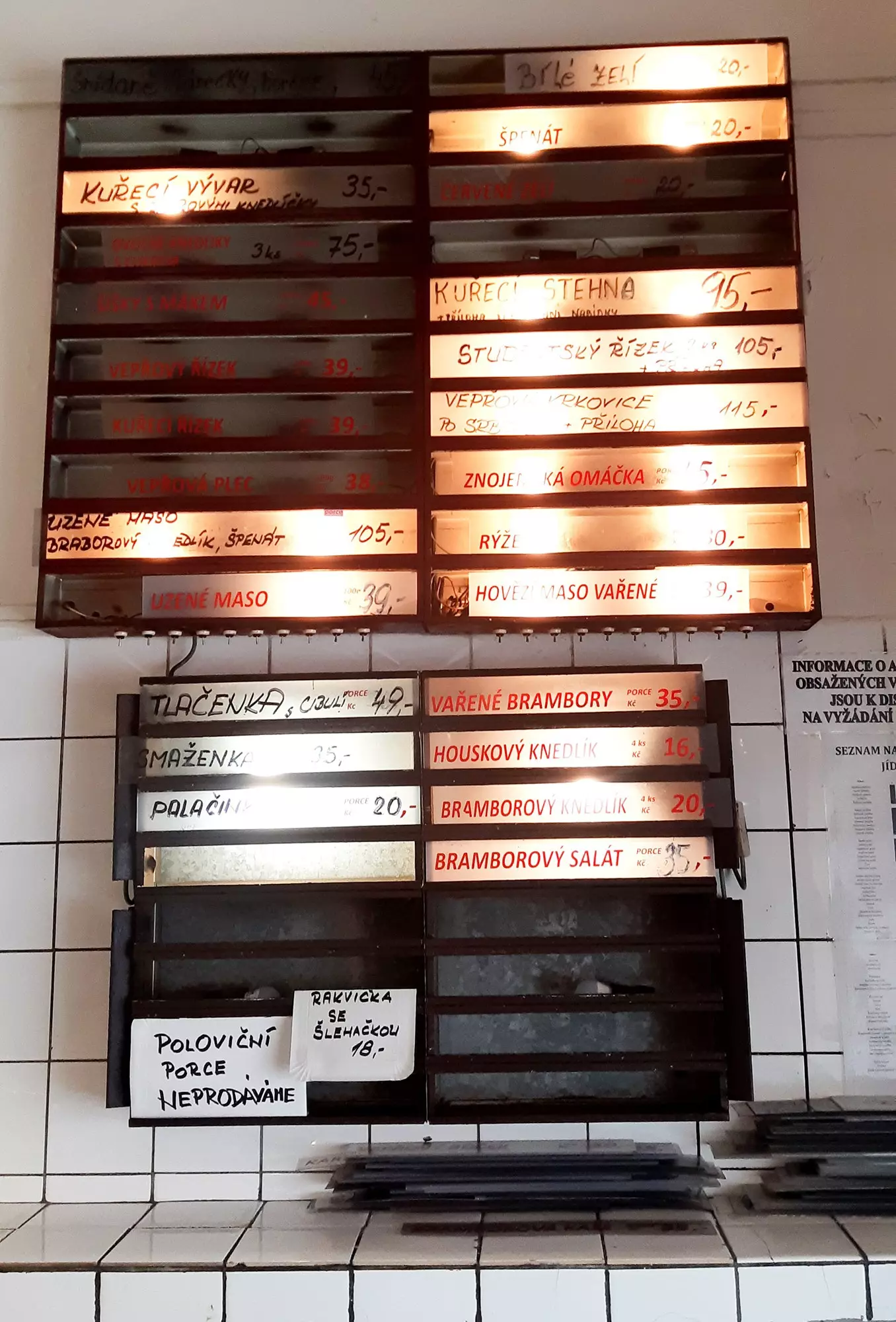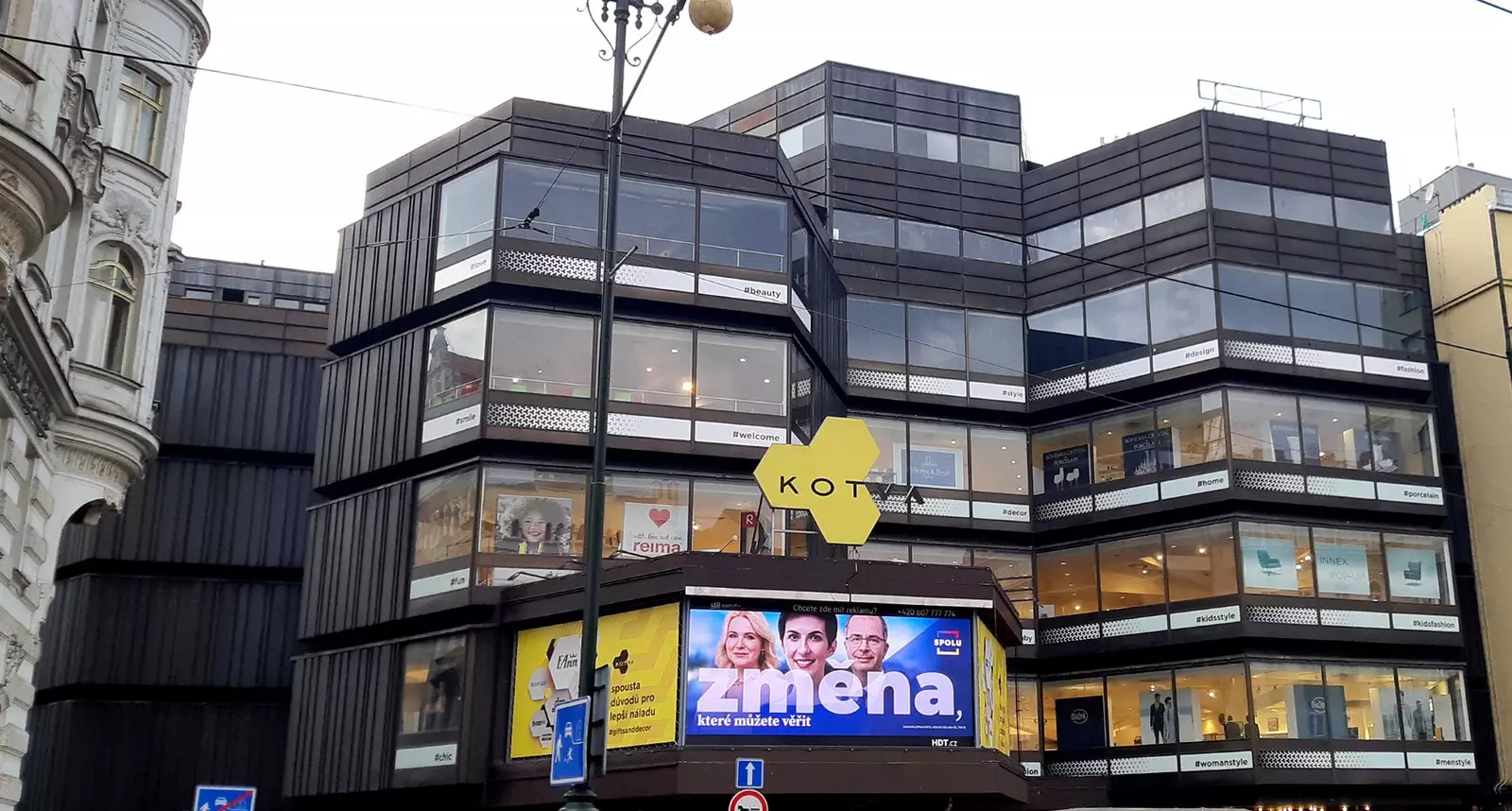I remember my life in black and white is one of the most pronounced phrases by one in four Praguers, that is, those who live in the city areas where the Soviet culture (in all its extension) was implanted.
That impression is perceived from the moment you begin to set foot in the communist zone. What happens at the last station of the red line of the Prague metro, Háje, where it was decided to place a statue in homage to the cosmonauts who went into space, the Czech Vladimír Remek and the Russian Alexej Gubarev.
that did not step on the moon, but the Russians took it upon themselves to tell all Praguers that the Americans didn't either, a lie they discovered for themselves almost in 1989, when the Velvet Revolution ended communism. Yesterday, as they say.
The point is that everyone has the image of a beautiful, classic Prague, with its palaces and its bridges, its cobbled streets and its Rondocubist buildings, an architectural style, by the way, uniquely Czech.
And all this is real, and beautiful, and you have to visit it and get lost, letting the stories of princes sneak into our memory. Because Prague is that. But it would be unfair to stay in that layer, because there is another, deeper, that is not found in the organized tours and that we have discovered walking with Jitka, the only guide you know the ins and outs of that soviet zone, perhaps because she has lived there until recently.

Statue of Vladimir Remek and Alexej Alexandrovic Gubarev, in Prague.
RUBBER AND MUD SHOES
When we started to walk, after rigorously taking a photo the famous statue of the aforementioned cosmonauts, we decided to put our retina in black and white to understand that life. Because today, to 'soften' the hard gray of the hives of similar buildings that follow each other in the suburbs, the facades have been painted in cheerful colors, green, blue or yellow. to those constructions they are known as panelák, because of the material from which they are made, prefabricated concrete panels.
The chimneys of the nearby factories are barely smoking anymore. And the open space where Jitka and her friends learned to ski sliding down the huge mounds of earth turned into snow hills in winter, today it is a beautiful green park where young people walk with baby strollers.
The mothers from before did the same but in the cemetery, the only "beautiful" area. This time is known as 'rubber and mud shoes' and it is perfectly reflected in the film Panelstory, by director Věra Chytilová.
We are in the neighborhood of Ciudad del Sur (Jižní Město, in Czech) and, upon reaching Křejpského Street, we see that a neighbor is about to enter his house, in one of those gray behemoths before. "Excuse me, do you mind if I come up and take a photo from the top floor (there are 12)?"
It opens us and we enter the 70's? Brown tiles, gray walls, hard metal railings, rough wooden doors. And from above, when you look out, you see the concrete field where real Prague life takes place.

The buildings known as 'panelakys', in Prague.
COMMUNIST DINING ROOMS
As in every life and neighborhood worth its salt there are shops, some on the ground floor of those same panelakys that were offered as locals to neighbors who wanted to set up a business there. Not all survived the arrival of capitalism. But the ones that continue, and also the same, are the communist bars and dining rooms.
The Severka opens at three, when people come home from work and stop by for their first drink, and the signs on the door leave no room for doubt: “Over 18s here. Bicycles: no. Pets: no. Children: to the park. Inside, the bar is made of weathered wood and the floor tiles and the ceiling walls accumulate as many cracks as stories are counted every day.
When hunger strikes, the locals bet on those dining rooms that appeared in those years and that Today they retain their aesthetic. And the meals. The procedure is simple: the name of the menu is placed on a luminous cabinet where each dish shines when it is available, and the corresponding sheet is turned off or removed when finished.
The ladies of the neighborhood are in charge of preparing the food, and the prices are the cheapest. The normal thing is to accompany it with the classic lemonade, but one cannot leave without trying a Czech-communist Coca-Cola. We will not reveal the secret. The undersigned did the same in the Retro Jídelna dining room. Quite an experience.

Menu of a dining room in Prague.
THE BRIDGE OF SUICIDES
Our feet are bringing us closer to the center and, All around us, the Soviet constructions begin to fade between the new and modern buildings glass and mirrors. But when we least expect it, the brute force of the Congress Center emerges, called Palace of Culture in Soviet times, colloquially known as Pakul.
And it is inevitable the association of brutalism with Soviet constructions, because it is an architectural style that emerged between the 50s and 70s of the 20th century, whose etymology referred to the French term béton brut, 'raw concrete', the main material.
In the distance, the characteristic rocket-shaped Žižkov TV tower, which in 2009 received the dubious honor of being declared The second ugliest building in the world. To taste the colors. But at 216 meters it is the tallest building in the Czech Republic. At 93 meters there is a viewpoint, 30 meters below there is a bar and a cafe, and at 73 meters, we find a very exclusive hotel with only one room.
in between, the Suicide Bridge acts as a connecting axis between that gray Prague and the colorful and presumptuous center. It goes without saying that it receives its name due to the bad habit that the inhabitants have of ending their lives there. And that we include it because it is soviet brutalist, of course.
We must go through it looking back, to see where we came from, but without losing hope of finding some other communist secret hidden between museums, squares or shops, more in the center.

Kotva store, Prague.
THE DREAM OF A CRAZY PASTRY BEAKER
Jitka calms our anxiety: they remain, yes, hidden among the most classic part of Prague. Like the Hotel International, a monumental tower of 16 floors and 85 meters high nestled in the Dejvice neighborhood. Because of its majestic architecture it was ironically nicknamed “a mad confectioner's dream”.
In the district of the Old Town of Prague and in the heart of Republic Square, they find each other Kotva department store, famous for its bizarre communist-era architecture, consisting of a skeleton of iron and concrete that is divided into six volumes.
The route ends next to the National Museum, in front of the old Communist Parliament, a building that occupied the Stock Exchange in the 1930s but that it was modernized, developing there from 1969 the parliamentary sessions.
today is called New building of the National Museum and is linked by an underground tunnel with the historical National Museum. Similar to a giant black glass table, the Czechs find it an eyesore, but it is still part of their history. A story, the Soviet one, that has made us fall in love with Prague even more.
